Callaway launch time means Doc Hock time and the Rogue range of clubs is no different. I caught up with Dr Alan Hocknell, SVP of Callaway's R&D team to ask the questions we all want to know.
Hi Alan. Why have you decided to call the new equipment Rogue rather than a variation of Epic?
That’s a good question and there a probably two reasons. The first is that we operate on two year product cycles at least so if there were to be another Epic product then it probably wouldn’t be for another year.
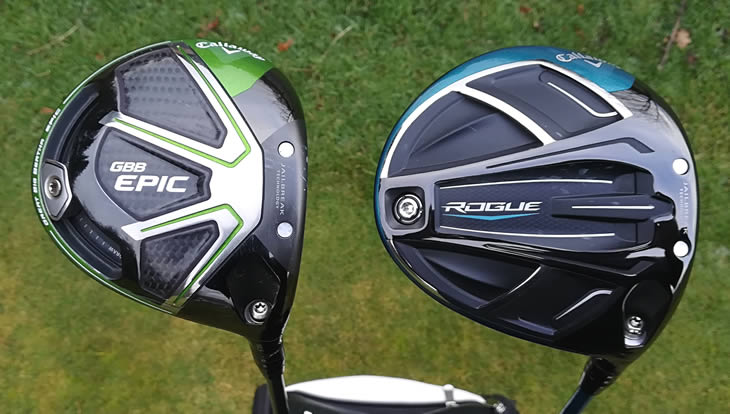
The other reason is that Rogue was actually an internal cry to ourselves, in that Epic has obviously done very well as a driver but there is more that we could do. Could we take the technology that we first introduced in Epic, most noticeably the Jailbreak technology, and could we explore how to take it further? Could we employ a little Rogue thinking, if you like, to the R&D process? Funnily enough quite often the names that are used in R&D for codenames and buzzwords that go around end up making their way somehow into the product naming and this is another example of that.
What is different about this Jailbreak compared to the implementation of it in the Epic driver?
Jailbreak in Epic was the first time we had managed to get that technology all the way through to a product level – get it through the production process, make it durable, make it have the ball speed advantages that it did. But a year later we have had 12 months longer to really refine that, we have made Jailbreak lighter and we have made it work in greater synergy with the face design.
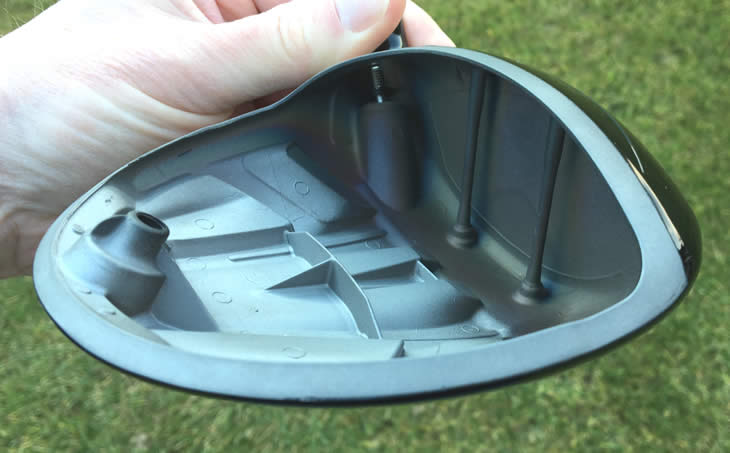
The face of Rogue Driver is different from Epic and has a brand new X-face design. It is substantially thinner around the edges and it is a lighter face than we have had before and that works with Jailbreak even harder to give us more ball speed than we had even with Epic.
The Epic driver had carbon in the crown but also in the sole. In the Rogue there is no carbon in the sole so why is that?
There is a different weight distribution in Rogue vs Epic in particular Epic had a sliding weight in a track in the back of the head. Rogue instead features a much more stretched out shape with a single fixed weight a the back of the head so there is much more of an emphasis of weight going to the back of the head to produce large MOI and large forgiveness.
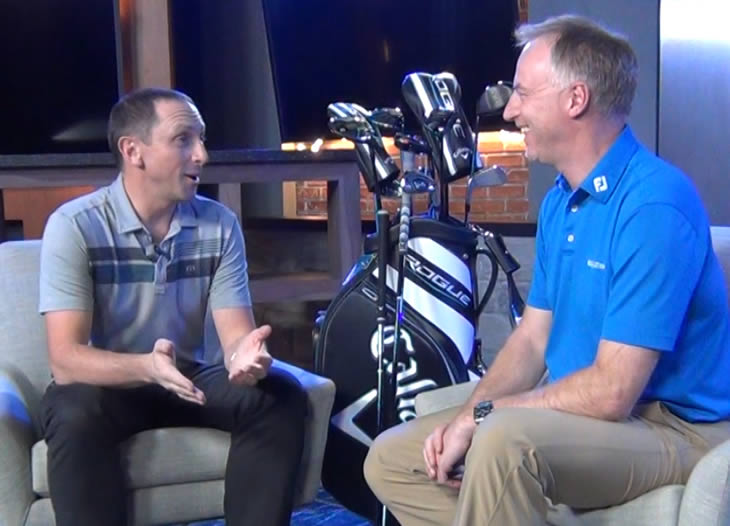
We worked out that when we stretched out the shape like that we had a decision to make whether to use carbon or not on the sole. We wanted quite aggressive sole styling as well as the rear weight positioning so in the end it turned out that we didn’t get that much of an advantage from having the carbon in the sole so we decided we would take it out in this particular case and introduce the much more interesting titanium appearance instead.
The Speed Step crown that has been on previous Callaway drivers for aerodynamics is there again but it now has one line instead of two. Why has that been modified?
Yes, you can definitely see the idea of the Speed Step being there on Rogue but what is harder to see are the subtle changes in the head shape themselves. We worked again with the team from Boeing to influence the way we shape the face and the transition to the crown.
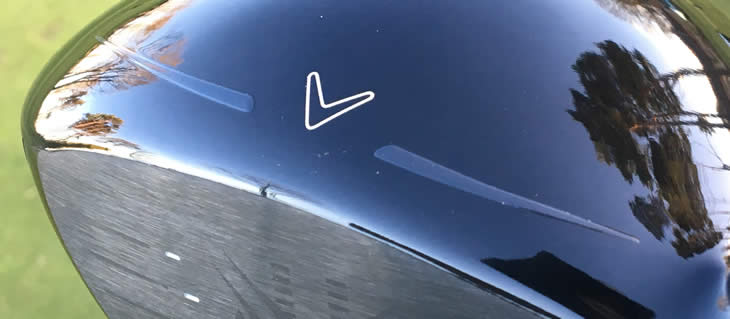
We paid a lot of attention to that leading edge radius in the same way that Boeing would pay attention to the leading edge of a wing and we modified the airflow primarily using the shape of the head and therefore the Speed Step doesn’t need to do quite as big of a job because more of the airflow control comes from the actual shape of the head.
At address there is definitely a much bigger footprint with the stretched shape you have mentioned to give you the added forgiveness. Is there any reason why that wasn’t the original shape of Epic first time round?
Yes, some of it comes back to the mass properties and the distribution of that mass. When we have a sliding weight and a track that carries that sliding weight a certain amount of the weight is contained in the ability to have that quite important form of adjustability.
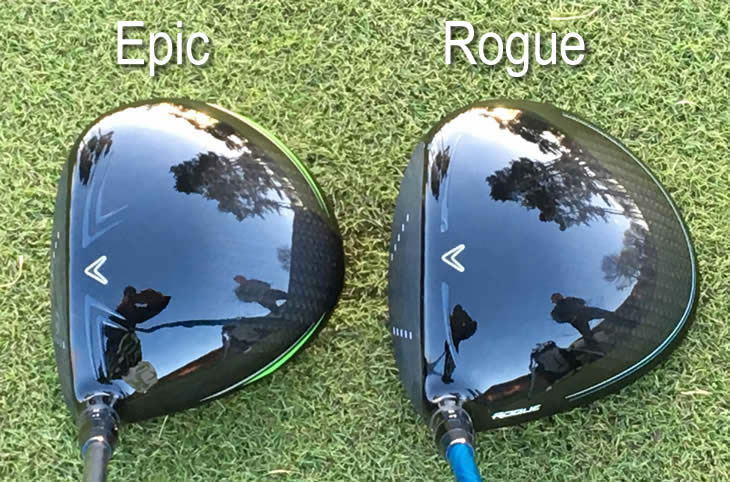
If you take that away it gives the designers more freedom to use that weight in other ways and in Rogue we decided to take that weight and stretch the dimensions of the head out, really emphasising weight at the back and front of the head, to give us high MOI.
So we take what we had with Epic, which was great ball speed, we used the new Jailbreak to enhance that ball speed and produced a much more forgiving driver than we had in Epic, and we think that gives this driver a different stance than the Epic driver.
You have two versions of the Rogue, the standard and the Sub Zero that is lower spin, and the Sub Zero Rogue actually looks larger than the original standard Epic so is it more forgiving even being the low spin version?
It is. Actually it has similar MOI numbers to the original Epic driver so that is good in that we have produced the really low spin characteristics in a driver with a large MOI.
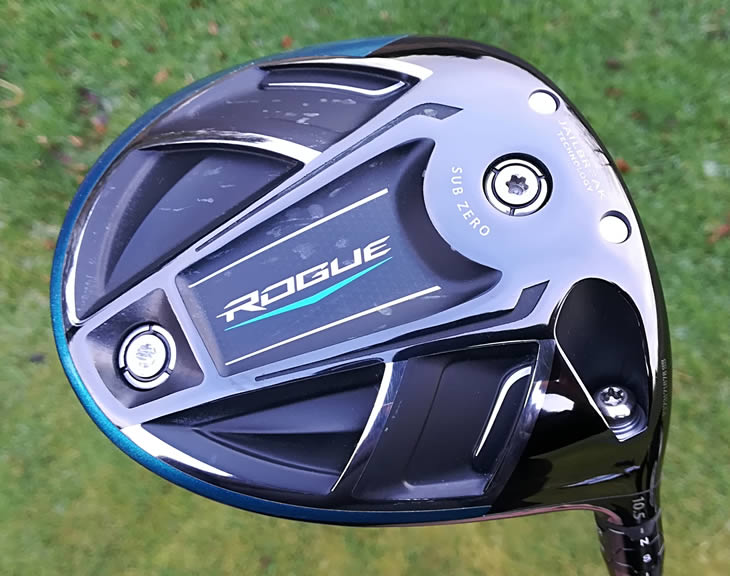
A lot of that influence came from Tour players saying that they weren’t so enamoured with the really big shapes, but the ones with the shape and size of Epic had great proportions for them, so producing low spin characteristics with high MOI in that shape was really the design challenge that the Tour gave us and that challenge gave rise to the Rouge Sub Zero.
Is it the case that for some people Epic may still be better than Rogue?
I think that could be the case. For players who really value a high fidelity fitting where you can use the adjustable sliding weight to really dial in shot shape I think there is definitely something there for that type of player. Then there are a lot of people whose friend has the Epic and they just want the same one as them.
We also we don’t expect 100% of our Tour players to completely convert and in some cases you just get a situation where the players get very comfortable with a driver. They are both extremely good drivers. Epic gives you a slightly different take on fitting than Rouge where Rogue has less fittable attributes if you like but it has much more forgiveness.
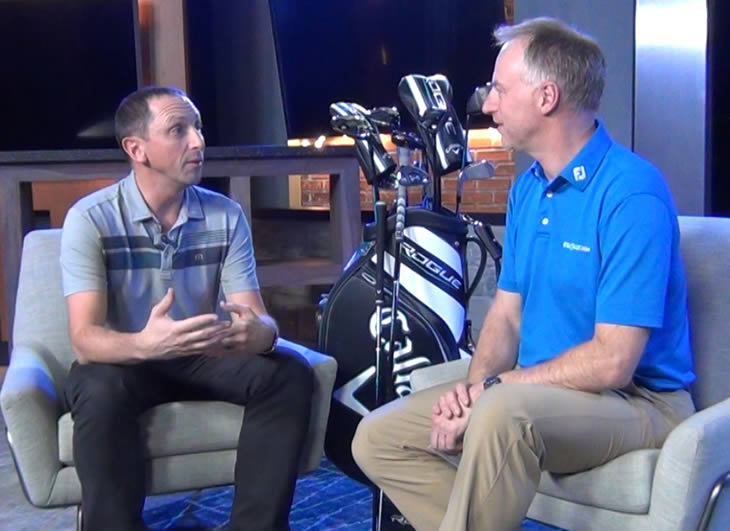
Going back to the Jailbreak technology in Rogue can you explain the changes you have made in terms of shape to a more hourglass outline and the advantages that has brought to the new driver?
Yes, that was part of the idea of working on refinements to Jailbreak over the year that it is behind Epic in terms of the product cycle. We looked at a great number of different Jailbreak variants along the way, starting out with what we had originally with Epic, and then going through a number of different ideas, and ending up back at two vertical titanium bars but this time with more slender sections. This allowed us to take weight out of them whilst still maintaining the stiffness that we needed.
With Epic there was no Jailbreak in the Epic fairway woods but this time round with the Rogue fairways you have Jailbreak. What allowed you to move the technology to the smaller heads?
The truth is that with Epic we still hadn’t figured out how to get the Jailbreak technology into the fairway woods. Fairway woods are different to drivers, they are not just scaled down versions. The fairways already had Face Cup technology in them which we think is the best ball speed generating technology available for a fairway wood. The shape and size is very different where you have a much shallower height relative to the width of a fairway wood and also impact locations tend to be lower on the face when you are hitting off the fairway.
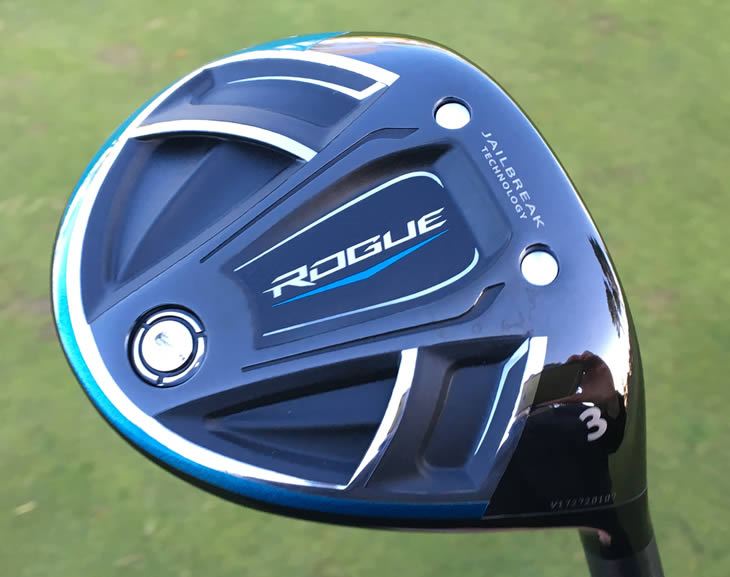
Also we already had a relatively stiff part of our fairway wood in the internal standing wave and the sole, so you start from a different place than you do with a driver, with other difference being that you are working with stainless steel in the fairway wood.
It is not just a case of a cut and paste of the technology for Jailbreak technology from the driver to the fairway. We had all these variables to contend with so we went through a similar development and research journey to the driver but a year or so behind.

We did end up figuring out though that two vertical bars is a viable solution for fairway woods and does produce a lot of the same effect in terms of stiffening the head vertically and making the face deflect more during impact and giving you more ball speed so we are now really pleased to have that in our fairway woods for the first time.
What were the biggest challenges in making that work? Did you have to modify the face in anyway?
In many ways the Face Cup stays very similar but it had to have slightly shorter return flanges in order to accommodate the Jailbreak position we wanted in terms of its proximity to the back of the face. Obviously casting in stainless steel presents a different problem versus casting in titanium.
A lot of the stainless steel castings we use are gravity fed so it was hard to get the material to fill the bars without having issues such as porosity that would create failures. A number of challenges that had to be overcome. The inside of a fairway wood is a small, confined and complicated shape so being able to produce the tooling to create Jailbreak where the bars are cast into the body was another challenge different from a driver.
In that case you must have had even more challenges with the hybrid as it is even smaller and you’ve put them in that as well!
That’s right! If you take the problems of the fairway wood and you amplify them in the hybrid, but luckily a lot of the performance research that allowed us to develop the fairway wood also applied to the hybrid but then it is even more challenging. You have got increasing loft, a smaller head, so all those were even bigger production challenges for the hybrid.

We managed to do it in the end. There is a lot of tenacity in the team. Part of the problem was in understanding the performance and would it work but at least half of the problem is in the production and the controls that are required in order to make sure that the parts, one after another after another, for thousands and thousands, are all up to the standards we want for COR and for durability. There was a big effort that went into that and it has been successful.

What are the benefits for Jailbreak in the hybrids? Is it the ball speed benefits you get in the other clubs?
Yes we are looking to enhance ball speed anytime we put Jailbreak into a product that is its job and it does produce an effect similar to the driver. The driver has the largest Jailbreak effect, with the fairways and hybrids a little bit smaller but it trends in a very similar fashion with a ball speed enhancing effect.
With the fairway woods when you have got more ball speed we wanted to investigate how to convert that into distance so we have changed the centre of gravity position that has allowed us to have a trajectory that launches higher with less spin and produces an overall flatter flight than it otherwise wood.
So an easy to launch, still high but flat flight, and that converts ball speed into distance very efficiently so you see pretty significant distance gains for the fairway woods and the hybrids.
So why have you gone for that flatter flight?
That was the recipe that we felt was becoming more popular, certainly with the elite players, launching the ball really high isn’t something they are into, and for average players, as long as we can produce sufficient launch angle to give you airtime then people aren’t so sensitive to the appearance of the trajectory so if it goes further which a flatter flight does then everybody wins.
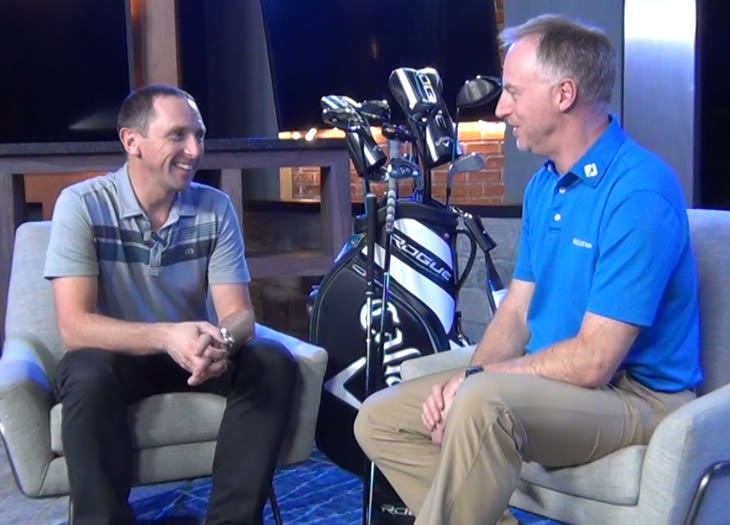
Does it not bring issues with the descent angle and stopping the ball?
With respect to the descent angle what we have been able to show is that within a degree or two there isn’t really any impact on the effect of the ball whether you do want it to roll out if you are still on the fairway potentially or if you don’t want it to roll out because you are hitting the green we are still in the same range of descent angles and stopping power that we had before.
There is no carbon in the crown of the hybrid but there is in the fairway and the driver and you have carbon in the Epic hybrid which is a smaller head. Why is that?
One of the things about the weight balance in the fairway woods and the hybrids to take notice of is that vertical weight balance is a big deal and in these Rogue fairway woods and hybrids they are not adjustable in the hosel but in the Epic models they are so that adjustable hosel is slightly heavier and steel than it would otherwise be so the hosels in Rogue are lighter than they would be in Epic.
Therefore in the case of the hybrid we don’t need to try quite so hard to make the centre of gravity go down because we have already got a lighter hosel. In the fairway wood we did put carbon in the crown because we wanted to really make a significant difference to the CG position to make to the chance in the trajectory I talked about earlier.
So to carry on moving down the bags let’s talk about the Rogue irons. Tell me what is the Swiss Cheese effect?!
So you are talking about our urethane with microspheres!
What we are trying to do is accomplish something we haven’t been able to do before. We are trying to go up in COR, so up in ball speed, and in order to do that you have to make the face more flexible.
When you make the face more flexible the impact creates vibration in the face and in the rest of the body of the iron such as when the ball has left you hear a sound that is too loud, too long a duration and probably too high pitched, it doesn’t essentially fell all that good, and it crossed the threshold into “no, people won’t buy this, it’s not good”.
So the question we asked ourselves is could you get all that ball speed and do something to the iron that improves the feel without taking anything away from the ball speed. We did a lot of exploration and found that if we took a very soft urethane material and mixed into it thousands of microscopic hollow glass spheres you produce a material that somewhat behaves like it is porous or a bit like a sponge even.

If you inject that into the back of the head into the cavity behind the face when the face deflects the material also sort of collapses on itself, it doesn’t provide any resistance to the flexing of the face, so the loss in ball speed is zero, but when the ball has left and the face wants to vibrate that material creates a damping effect and reduces the duration of the sound, the loudness and the pitch and produces much better feel.
A bit of a tangential way of going about getting more ball speed really is to go and look for a material that would allow us to damp out unwanted vibrations. With the spheres it looks a bit like Swiss Cheese so that's how it got that name internally.
In terms of the design of the rest of the head is that about making a faster Face Cup?
Yes we’ve got a thinner face with a different thickness pattern in it. Preferentially a little thicker in the centre and much thinner at the edges, particularly heel and toe and low on the face where people tend to miss with irons.
Another thing that we’ve done is try to move the centre of gravity to a point directly behind the centre of the face and we have done that with tungsten loaded steel that is made with a process called metal injection moulding. That was first seen our very expensive to make Epic irons and we have taken some of that technology and put it into the Rogue iron.
So we have got an iron in the middle part of the market in terms of price point that has much more technology in it than we have ever had before. Obviously the face cup is improved, there is a new body, metal injection moulded tungsten weights and the urethane microsphere all working in harmony with one another to produce great ball speed and great trajectory and great feel.
You mentioned the market there. There are three models, there is Rogue, Rogue Pro and Rogue X, and also a lightweight version. Where do they fit in your range in terms of market positioning?
The Rogue standard iron we see as the centre of the game improvement market. We have been number one in iron sales for a little while now and that has come to be the definition of a game improvement iron and that anchors the whole line.
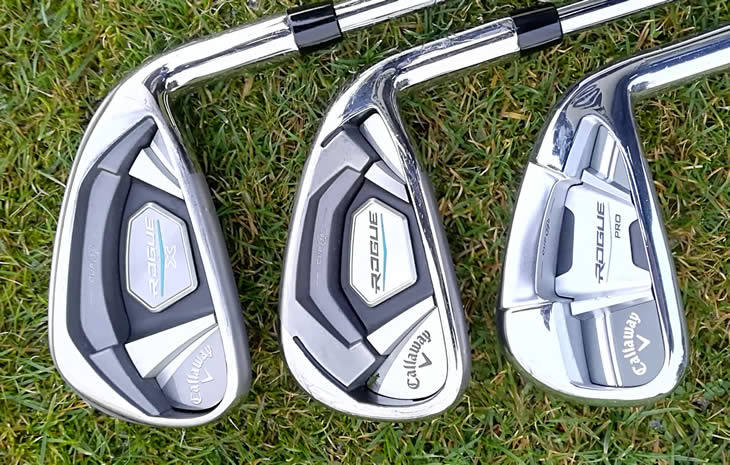
One step to the better player side you have the Rogue Pro model which has a thinner top line, thinner sole width and shorter blade length, less offset. All the same technologies but in a smaller, thinner, more slender package that usually suits the better player, a little more workable perhaps.
On the other side of the game improvement irons is a brand new idea in Rogue X. It is the sort of iron you have never before because it has got all of the technologies that are in the game improvement iron for the first time.
We have put it in a slightly larger head that gives us a bigger dimension from the face to the back of the club so the CG is further back from the face, all of which helps us with launch angle. So we have got that new technology package in the head configured differently on a set of heads that are stronger lofted unashamedly, they are lighter overall, the club is about 10g lighter and they are on slightly longer shafts in certain parts of the bag.
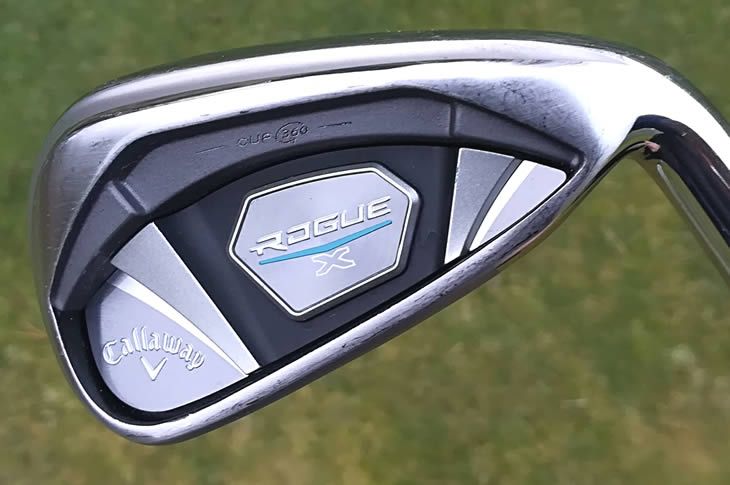
So we have taken this opportunity of all this new technology that is in the standard Rogue iron and reconfigured it in a quite aggressive way to produce an iron that is unashamedly all about distance. So if you want to hit irons particularly long then Rogue X gives you the best opportunity to do that.
We encourage people to go and try that out before they just look at the spec sheet and say this is strong lofted or it’s long shafted or something like that. Go and try for yourself because what we have seen is that although we have made changes to loft and length and weight versus the standard iron the launch angles that people get are very similar to the standard model, you just have less spin and more ball speed and that is a recipe for more distance.
Does that not affect the gapping at the bottom of the set? The clubs go down to sand wedge so is it a case of just moving the numbers around a little bit?
There is a little bit you could think of that. If we had just taken the regular game improvement club and shifted the numbers by one then we would say, “Yes it’s a fair cop that’s what we did”. But we didn’t do that.
We really studied the performance of each iron and we changed the shape of the head from the standard model in order to get other advantages. The truth is thought that there is a new 'G' wedge in the set to give you the gapping at the upper end.
Down at the lower end the Rogue X hybrid is also configured similarly, it is a larger headed hybrid with more MOI, slightly longer and lighter, slightly stronger lofted and it dovetails well into the other end of the set so you have got the opportunity to have a really different, distance oriented set of clubs.
Thanks Alan
Callaway Rogue Driver Review
Callaway Rogue Fairway Review
Callaway Rogue Hybrid Review
Callaway Rogue Irons Review
More from Callaway